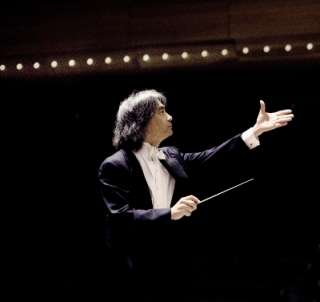|
Back
An exciting visit Toronto
Roy Thomson Hall
02/12/2014 - and February 5, 6, 15 (Montréal), March 17 (Vienna), 20 (Madrid), 22 (Oviedo) 2014
Gustav Mahler: Symphony No. 7 in E Minor
L'Orchestre Symphonique de Montréal, Kent Nagano (conductor)

K. Nagano (© Felix Broede)
As part of its season, the Toronto Symphony Orchestra presented this single performance by l’Orchestre Symphonique de Montréal. (In exchange, the TSO performs in Montreal on Apr 8 with a program by Mozart, Richard Strauss, and Vivian Fung.)
It is hard to come up with a succinct verdict for a performance of such a multivarious work, but what comes to mind for me was that it showed the genial side of Mahler. Genial? Mahler? And isn’t this symphony all about night, that ominous near-death-in-life?
Alma Mahler stated that Gustav had in mind the poet Joseph von Eichendorff’s visions of night, something mysterious and romantic. (Robert Schumann used Eichendorff’s poetry for his Liederkreis, Op. 39; the dreamy “Mondnacht” epitomizes the mood.) The restless first movement certainly has its neurasthenic outbursts, but also bucolic scenes and some ultra-romantic work for the harpists. The second movement - and first of the two Nachtmusik movements - is downright jaunty, with cowbells(!), while the fourth (the second of the nachtmusik movements) is as bucolic as Vaughan Williams or the like. The third scherzo movement slips and slides around in sardonic fashion - let’s not forget that scherzo means “joke”. The boisterous final movement begins with what sounds like the cavalry at the gallop but then has a bumptious sequence that brings to mind Holst’s “Neptune, the bringer of jollity”. There are a couple of vigorous Turkish-sounding episodes before an exuberant finale that foreshadows that of Mahler’s next symphony, the mighty Eighth.
I think we’re a bit too fond of the death-haunted Mahler. This work was composed in the summers of 1904 and 1905 at his then much-loved summer house at Maiernigg; his marriage was happy and this is before the death of his daughter or the onset of ill health. I don’t know if it was Nagano’s aim to present the amiable side of Mahler, but that was the result.
Twenty-one extra musicians were added to the regular OSM for this work, resulting in the platform being filled with about 110 players. The so-called European setup was used, with the double basses on audience left, and the violins divided on the right and left of the conductor. To say that Kent Nagano is a clear-headed traffic director is not meant to be an insult or faint praise - it is a prime necessity in a work like this. This really came to the fore in the scherzo movement. To me the one miscalculation was the near inaudibility of the offstage horn.
The near capacity audience received the work with great enthusiasm. It isn’t performed often here (or anywhere).
This massive work seems to have been taken on as a special project this season. The OSM performed it on Feb 5 and 6 in Montreal; they travelled to Toronto for this Wednesday engagement sandwiched between two performances of a completely separate program back home. The Mahler was then played for a fourth time on home turf three days later (Feb 15). In March it will be performed three times as part of the orchestra’s 11-concert European tour: in Vienna, Madrid, and Oviedo. It would be terrific if all this work could result in a recording.
Michael Johnson
|